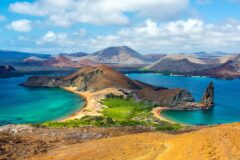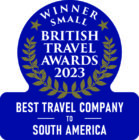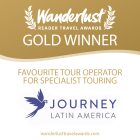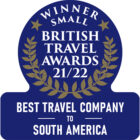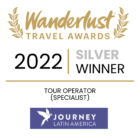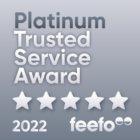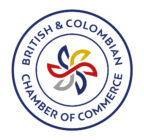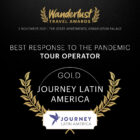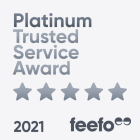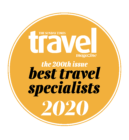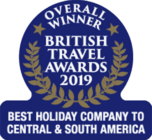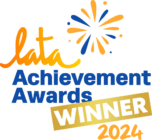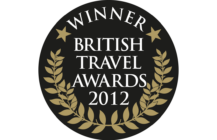
Overview & Highlights
With the freedom of a hire car, this self-drive Chile tour explores little-visited wildernesses of outstanding natural beauty. Discover Chiloé Island, the lake district, the remote Austral road, and the Aysén region of fjords and glaciers.
- Guided 3-day visit to rugged Chiloe, an island steeped in tradition
- Excursion to the millenary trees of Alerce Andino National Park
- 6 days of self-driving along Chile's legendary Austral highway
This self-drive Chile holiday goes off the beaten track to discover some of the more sparsely populated corners of this wildly beautiful country, including the Carretera Austral, only completed in the early 1980s and the first proper road to negotiate this fractured region of fjords, glaciers and rivers.
A 4,000km long, skinny coastal strip backed by the Andes mountain range, Chile has a variety of climate and landscape to match its changing latitudes. This holiday explores a little visited part of Patagonia.
First, we take you exploring the back-roads of the deeply traditional island of Chiloé and intact, ancient forests in the lake district. The most rewarding way to explore your next destination, Aysén (Chile’s Region XI), is in your own hire vehicle. An area of staggering natural beauty, Aysén was for centuries neglected: its fractured landscape of fjords and glaciers hard to negotiate, its agricultural potential meagre, its natural resources hidden away. Political dissidents were sent into exile here, and immigrants from persecution also found peace among the pines.
Now the region, long favoured by fishermen, is opening up to visitors and becoming popular with outdoor adventure activities enthusiasts. The Austral Road offers one of South America’s great iconic road trips with scenery of almost unimaginable beauty. To help you on your way, all your hotels are pre-booked and we have suggested a route to help you get the most out of this magnificent region.
Outline itinerary
Day 1
Arrive in Santiago. Transfer to hotel in an arty up-and-coming district of the capital.
Day 2
Transfer to airport and fly to Chiloé Island. Visit Dalcahue port and Castro, the capital.
Day 3
Guided tour of the surrounding area.
Day 4
Take a ferry to Quinchao island. Onward ferry to the mainland, continue to Puerto Varas.
Day 5
Guided excursion to Alerce Andino National Park.
Day 6
Fly to Balmaceda in Patagonia, collect hire vehicle, and drive to Puerto Rio Tranquilo.
Day 7
At leisure to explore the region.
Day 8
Drive to Caleta Tortel, a village on the Carretera Austral.
Day 9
At leisure to explore the area.
Day 10
Drive to Puerto Guadal on the shores of Lake General Carrera.
Day 11
At leisure to discover local highlights.
Day 12
Drop off car at Balmaceda airport and fly to Santiago.
Day 13
At leisure to explore the capital.
Day 14
Transfer to airport for international flight home.
Itinerary
Day 1
Arrive in Santiago. Transfer to hotel in an arty up-and-coming district of the capital.
Transfer from Santiago airport to your hotel in Lastarria, an up-and-coming, arty residential district. The capital is set in a broad valley between snow-capped ranges of the Andes and a smaller coastal range with a distinctly Mediterranean feel. It’s a huge metropolis: a mix of the old and the contemporary, with districts of tree-lined avenues and affluent tranquillity and others full of commercial bustle. Poorer districts sprawl on the outskirts.

Day 2
Transfer to airport and fly to Chiloé Island. Visit Dalcahue port and Castro, the capital.
Transfer to the airport and fly to Chiloé, an island of mists and mysteries with a strong rural tradition, unique wood-shingled churches and fishermen’s houses on stilts.Upon arrival in Chiloé you have a guided visit by road to Dalcahue, a thriving fishing port on the east coast of the island.
The harbour is usually busy with colourfully-painted wooden fishing boats, while the town’s market is a good place to stop for lunch. Visit Dalcahue’s quaint 19th century wooden church, one of a staggering 16 Unesco World Heritage sites on the island.
Continue to the island’s busy capital Castro, about 10km south of Dalcahue. Castro is nowadays a busy, modern commercial centre but retains a small-town feel and has an evocative setting, straddling a bay enveloped by mist-shrouded, velvety-green hills. Castro’s soaring gothic-style wooden cathedral is among Chiloé’s most impressive attractions. A wonderfully photogenic row of traditional palafito stilt houses survives along its waterfront. In the evening you will have the opportunity to savour Chiloé’s culinary treat, the curanto, a meat and fish stew.

Day 3
Guided tour of the surrounding area.
Guided visit to Castro’s produce market, where the displays of seaweed, smoked shellfish, jumbo-sized fresh vegetables and hand-made cheeses showcase the island’s traditional agricultural and fishing-based economy.
Later you are driven north to the coastal hamlet of Qemchi, and cross by a rickety 500m wooden footbridge to tiny Isla Aucar. Its small botanical garden is a sanctuary of native Chilote flora, planted by a priest who managed the island’s 19th century chapel. Continue driving along the coast, with its small fishing communities and a bucolic backdrop of rolling hills, velvety pastures and quaint wooden churches. Stops will be made en route, including lunch with a local family or at a traditional restaurant.

Day 4
Take a ferry to Quinchao island. Onward ferry to the mainland, continue to Puerto Varas.
By road and ferry back to the mainland and Puerto Varas in the south of the lake district. This verdant region is criss-crossed with a network of scenic roads linking lakes – most of which seems to have a snow-capped volcanic cone dominating their cobalt waters and sleepy small towns and villages along the shoreline.
Puerto Varas is on the shores of Lake Llanquihue. The town was colonised by Germans at the turn of the 20th century and its architecture and sedate style reflects this, but it is now a fast-growing tourist resort. The town’s main attraction is an alpine green lake framed by tree-clad hills. Beyond is Osorno, one of the most perfectly shaped snow-capped volcanoes in the world. If you’re lucky enough to be in Puerto Varas on a clear and still evening, the sunsets over Osorno’s snowy mantle can be magical, best appreciated from the lakeshore promenade.

Day 5
Guided excursion to Alerce Andino National Park.
Guided day excursion to Alerce Andino National Park, created to protect the temperate rainforest of alerce (larch) trees, the largest in Chile. The alerce is a towering, magnificent, majestic tree; it can grow to 60m high with a diameter of up to 5m.
Although numbers were depleted by logging in the 19th and 20th century, there are individual specimens up to 3,000 years old, protected as national monuments. In their natural setting, together with other Patagonian species, they create a magical sylvan environment.

Day 6
Fly to Balmaceda in Patagonia, collect hire vehicle, and drive to Puerto Rio Tranquilo.
Transfer to Puerto Montt airport and fly to Balmaceda in the Aisén region. Collect your hire vehicle and set off on your exploration of the Carretera Austral and its link roads.
The 1,240km Austral Road (Carretera Austral) cuts a lonely swathe through some of Patagonia’s most pristine territory. Much of the highway is unpaved, a bumpy gravel track winding its way through craggy mountains and temperate rainforests, fording streams and skirting lakes. Glimpses of remote farmsteads, wood-shingle churches and sheepskin-clad horsemen are a reminder of the traditional way of life which survives here.
This self-drive route begins at Balmaceda (Coyhaique) airport and follows the southern section of the Austral Road for some 450km towards Caleta Tortel. Based at rustic but cosy lodges, you can wander on mountain trails, explore native forests, sail on beautiful lakes and hike to glaciers. The scenery seems to change with every turn and the flexibility of being able to stop whenever you please to take in the views – and to take pictures – is part of the beauty of self-drive.
Today you’ll drive to Puerto Rio Tranquilo for 2 nights. Dry Pampa will gradually give way to green forests, mountains and glacial valleys as you cross the pass at the National Reserve of Cerro Castillo. The journey is approximately 195 kilometres, taking around 5 hours to drive, of which 3-4 hours will be on unpaved road.

Day 7
At leisure to explore the region.
At leisure to explore the area. You might hire a boat and guide in Lake General Carrera to reach the Marble Cathedral, an impressive eroded marble boulder the size of a large house just off marble cliffs with substantial caves. The stippled surface would do a sculptor proud and the turquoise waters over white marble look positively tropical.
You could alternatively drive along the extremely scenic side road from town which runs 58 km toward the Exploradores glacier, quite breathtaking scenery (4-wheel drive may be needed).

Day 8
Drive to Caleta Tortel, a village on the Carretera Austral.
Drive to Caleta Tortel via the town Cochrane. The road is unpaved all the way and, although there are stretches where you travel in a straight line, much is along winding roads, going up and down the mountains with vertiginous drops. The road passes through exquisite landscapes – ancient woodland clinging to near vertical cliffs, deep emerald foliage, mirror-clear glacial lakes of different shapes and colours, spikey mountains rising behind – everywhere is a good photo opportunity. The drive takes around 8 hours including stops.

Day 9
At leisure to explore the area.
At leisure to enjoy this gorgeous scenery. The extraordinary village of Tortel was founded in 1955 to exploit the cypress wood that was (and still is) abundant in the area and for most of its history the only access was by air and boat – the road was only built in 2003. Occupying a creek, it has wooden walkways instead of streets, set on in different levels and connecting houses which, in turn, are all on stilts. The village is very tranquil with just a few shops and a couple of simple restaurants.
Day 10
Drive to Puerto Guadal on the shores of Lake General Carrera.
Retrace your route 198 kilometres back up north today to Puerto Guadal. En route you could visit the Tamango National Reserve (30mins from Cochrane) or explore the Chacabuco valley. The scenery from this perspective is as stunning as before, the journey takes about 6hrs.
Puerto Guadal is back on Lake General Carrera, this time on the southwest corner. You stay on the shores of the lake across from the village, with magnificent views across the water. Blessed with a micro-climate that virtually guarantees the best weather in the region (and more days of sunshine than most other lakeside communities) Puerto Guadal is fast becoming a destination of choice for visitors. In spring and summer the meadows are ablaze with colour as thousands of lupins and other plants come into flower. In February the village stages a week-long fiesta where one can watch Chilean-style horse racing and traditional games like La Taba. There’s plenty of traditional Patagonian food to sample.

Day 11
At leisure to discover local highlights.
At leisure. Your accommodation hosts may suggest some adventures in the vicinity, such as a walk to a waterfall on the Maquis river, just east of town on the road to Chile Chico. There are multiple cascades as the river tumbles over steep cliffs and through dense coigüe and ñire forests as it empties into the lake.
Alternatively you might drive to a mine, abandoned in 1986 by a French mining company. The old mining installations and machinery used to mine deposits of lead, zinc and copper are still in place.

Day 12
Drop off car at Balmaceda airport and fly to Santiago.
Drive back to Balmaceda airport (6 hrs); drop off your vehicle. Fly to Santiago; transfer to your hotel.

Day 13
At leisure to explore the capital.
At leisure to explore Santiago. A mixture of chic, residential areas and smart office towers surround the compact colonial centre. If you set off from the University district, you will see the elegant 19th century mansions of the old aristocracy en route to the Plaza de Armas (Main Square) and historic municipal and cultural buildings.
We suggest you continue to the Italian-influenced neighbourhood Bellavista with its cobbled streets, cafés and gift shops. There’s a panoramic view of the city from Cerro Santa Lucía, a hilltop park. If you have time, a funicular tram or cable car can take you to the top of Cerro San Cristóbal. There’s a swimming pool and other family friendly amenities, and you have a panoramic view of the city and the snow-draped Andean mountains beyond.

Day 14
Transfer to airport for international flight home.
Essentials
Tour info
Transport
3 domestic flights; 2 ferries, self-drive car route.
Accommodation
We’ve chosen small and friendly mid-range guesthouses and cosy rural lodges; all are comfortable and well located for exploration of the area. They all have well-equipped rooms, private bathrooms and heating. Our favourite, Cabañas Mirador del Guadal, has heavenly views of Lago General Carrera in deepest Patagonia.
Meals
Breakfast daily, lunch days 2,3 & 5.
Guides
We carefully select our local partners in Latin America, some of whom we have worked with for over 25 years. Their English-speaking guides understand the expectations of our clients very well, and are consistently singled out for praise by the latter on their return.
Summary Of Nights
14 days, 13 nights: Santiago 1, Castro 2; Puerto Varas 2; Puerto Tranquilo 2; Caleta Tortel 2; Puerto Guardal 2; Santiago 2.
Daily Spend
It is very difficult to give a guideline for essential expenses but a budget of around US$50 per person per day should cover the cost of meals not included in the holiday itinerary, drinks and the odd souvenir. Eat at the best restaurants and you will pay considerably more.
A budget of approx US$200 should be sufficient to cover fuel costs for the self drive sections.
Currency
The unit of currency in Chile is the peso.
How To Take It
Cash machines are available in Santiago, Castro and Puerto Varas and so taking a debit or credit card with a PIN number is the most convenient way of withdrawing money while on your trip, and in most shops and restaurants you can also pay by card. However, since cards can get lost, damaged, withheld or blocked, you should not rely exclusively on a card to access funds.
We recommend that additionally you take a reasonable quantity of US dollars cash (no more than is covered by your insurance), which you can exchange into local currency in the larger towns, and possibly some travellers’ cheques, though these are gradually falling out of use (American Express are the most widely accepted). Dollar bills should be in good condition, soiled or torn bills may be refused.
Have a ready supply of Chilean pesos for spending in the self-drive section where there are few working ATMs and credit cards may not be accepted.
Tipping
Tips are expected and local guides often rely on their tip as a significant proportion of their income.
Most service industry workers will expect a tip of some kind and so it is useful to have spare change for hotel porters, taxi drivers and the like. It is common to leave 10 – 12% in restaurants.
Insurance And Documents
Travel insurance is essential.
Details of our recommended policy can be found on our Travel Insurance page.
Car Insurance:
Your vehicle hire includes limited CDW (Collision Damage Waiver) insurance with an excess payable of approx US$1,150-US$1,800 in the event of loss or damage. Limits and certain exclusions do apply. Please contact us for further details.
From 8 June 2015 new regulations will apply concerning the paper counterpart of UK driving licences. This may affect what is required by the rental company when you collect your car.Please check https://www.gov.uk/government/news/driving-licence-changes for further details.
Trip Suitability
This is partly a self-driving holiday for independent-minded clients seeking the freedom to explore without the support of local guides and drivers but with the security of pre-booked accommodation. You should be confident to navigate along roads outside the UK, driving on the right. Some Spanish as well as mechanical knowledge, for example the ability to change a tyre, is highly recommended.
The self-drive section is off-the-beaten-track Patagonia for adventurous travellers; there are few services for travellers en route; fill up with petrol whenever you can. Routes travelled in the Aisén region are all on gravel roads for which 4-wheel drive is advisable. Let us know if you have a strong preference for automatic or manual transmission as vehicles supplied can vary. GPS equipment is not normally available but you will receive basic written directions and we will send you our Rules of the Road document with helpful tips specific to driving in Chile.
Climate
In the Santiago area expect a Mediterranean type climate though it can snow in winter (June-August). In October, November, March and April temperatures range between 15°C and 25°C and there’s a good deal of sunshine. January and February are hot, around 30°C or higher.
The lake district has a weather pattern not dissimilar to that of the UK, though summers tend to be hotter and sunnier and winters wetter.
The Aisén region has a cool temperate climate, in places close to the coast it rains up to 300 days a year but in others, such as the area around Coyhaique, a rain shadow effect reduces precipitation. Warm sunshine is possible during the summer (Dec-Mar). However, as in all parts of Patagonia you should anticipate encountering all seasons, especially in the shoulder months of November and April. It can be very cold in winter (May-September), when roads may be blocked and hotels are closed.
Clothing And Special Equipment
For day-to-day wear you should go prepared to encounter all seasons. Both clothing for both hot and cold conditions including sun hat a light fleece jacket and a Gore-Tex (or similar) outer shell. Trousers, skirt or shorts made from light, quick-drying synthetic materials work well. If you plan to eat in smart restaurants in Santiago, although clothing is not formal (no need for jacket and tie), something quite smart would be appropriate. Strong, comfortable footwear is essential and you should bring umbrella, insect repellent, sun block and sun glasses. You might take swimwear for the odd dip in a natural pool.
Vaccinations
Preventative vaccinations are recommended against the following: typhoid; polio; tetanus; hepatitis A. You should consult your GP for specific requirements.
You can also find helpful information on the Masta Travel Health website.
Visas
Holders of a full British passport do not require a visa, although passports must be valid for at least 6 months after the trip begins. Anyone with a different nationality should enquire with us or check with the relevant consulate.
If flying to the US, or via the US you will need to fill in your online ESTA application.
Airport Taxes
If you have purchased your flights through Journey Latin America, the international departure tax is usually included in the ticket.
What's included in the price
- Services of our team of experts in our London office
- Services of Journey Latin America local representatives and guides
- All land and air transport within Latin America
- Vehicle hire with limited insurance for Aisén region (Carretera Austral)
- Accommodation as specified
- Meals as specified
- Excursions as specified, including entrance fees
Included Excursions
- Chiloé Island: Guided visits to Dalcahue, Castro
- Chiloé Island: Guided tour of the coast and fishing villages
- Lake District: Guided excursion to Alerce Andino National Park
What's not included in the price
- International flights to Latin America
- Insurance
- Tips and gratuities
- Meals other than specified
- Optional excursions
